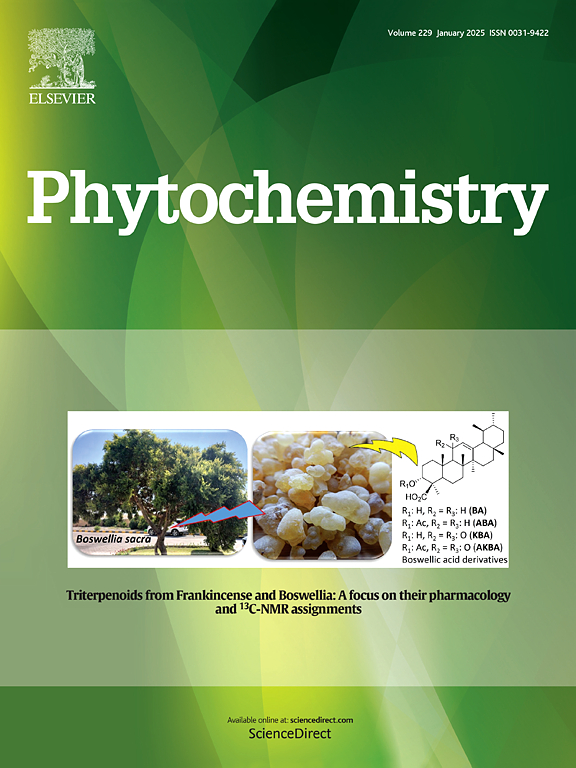南海软珊瑚中罕见的4-甲基孕烷和抗炎的5α,8α-附二氧甾醇。
IF 3.4
2区 生物学
Q2 BIOCHEMISTRY & MOLECULAR BIOLOGY
引用次数: 0
摘要
从中国软珊瑚Sarcophyton sp中分离出一种罕见的4-甲基孕烷型类固醇(1),四种先前未描述的5α,8α-附二氧甾醇(3-6),以及两种已知的化合物(2和7)。3-6的一个显著特征是存在罕见的1,2-二氧六环体系,这在Sarcophyton属类固醇中并不常见。通过广泛的光谱分析,与文献报道的光谱数据和x射线衍射分析进行比较,确定了它们的结构。在体外生物测定中,化合物3-6表现出显著的抗炎活性,假设b环上的过氧化物桥在这些作用中起关键作用。这些结果强调了海洋来源的甾体化合物的治疗潜力,特别是在治疗炎症性疾病方面。本研究突出了南海软珊瑚作为生物活性化合物的宝贵资源,为抗炎治疗领域的药物开发提供了新的方向。本文章由计算机程序翻译,如有差异,请以英文原文为准。

Uncommon 4-methylpregnane and anti-inflammatory 5α,8α-epidioxysterols from the South China Sea soft coral Sarcophyton sp.
One uncommon 4-methylpregnane-type steroid (1), four previously undescribed 5α,8α-epidioxysterols (3–6), along with two known compounds (2 and 7), were isolated from the Chinese soft coral Sarcophyton sp. A distinguishing feature of 3–6 was the presence of a rare 1,2-dioxane ring system, which has not been frequently reported in the steroids from Sarcophyton genus. Their structures were determined by extensive spectroscopic analysis, comparison with the spectral data reported in the literature and X-ray diffraction analysis. In in vitro bioassays, compounds 3–6 exhibited significant anti-inflammatory activities, with the peroxide bridge in the B-ring hypothesized to play a key role in these effects. The results underscore the therapeutic potential of marine-derived steroidal compounds, particularly for the treatment of inflammatory diseases. This study highlights the South China Sea soft corals as a valuable resource for bioactive compounds and offers new directions for drug discovery in the field of anti-inflammatory therapies.
求助全文
通过发布文献求助,成功后即可免费获取论文全文。
去求助
来源期刊

Phytochemistry
生物-植物科学
CiteScore
6.40
自引率
7.90%
发文量
443
审稿时长
39 days
期刊介绍:
Phytochemistry is a leading international journal publishing studies of plant chemistry, biochemistry, molecular biology and genetics, structure and bioactivities of phytochemicals, including ''-omics'' and bioinformatics/computational biology approaches. Phytochemistry is a primary source for papers dealing with phytochemicals, especially reports concerning their biosynthesis, regulation, and biological properties both in planta and as bioactive principles. Articles are published online as soon as possible as Articles-in-Press and in 12 volumes per year. Occasional topic-focussed special issues are published composed of papers from invited authors.
 求助内容:
求助内容: 应助结果提醒方式:
应助结果提醒方式:


